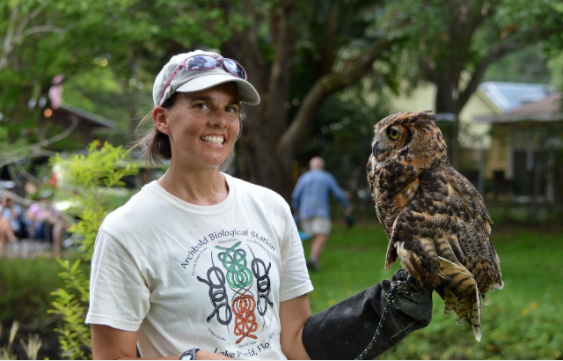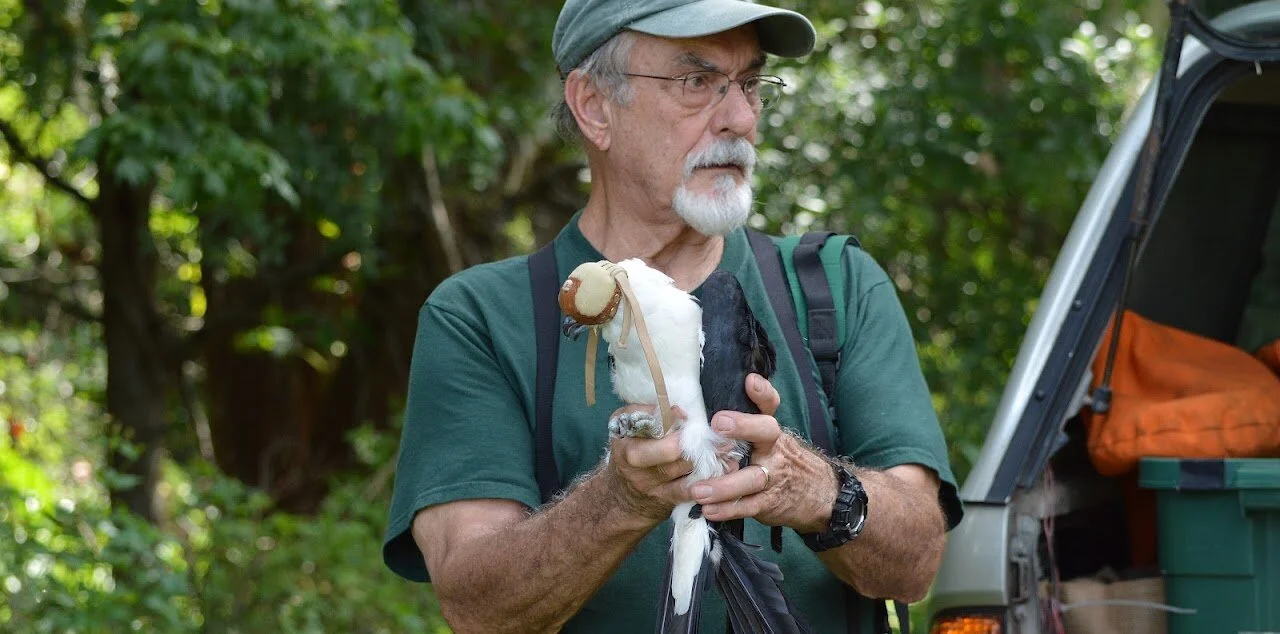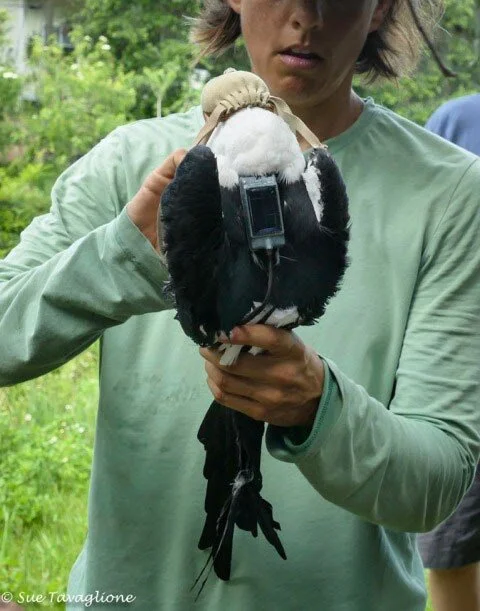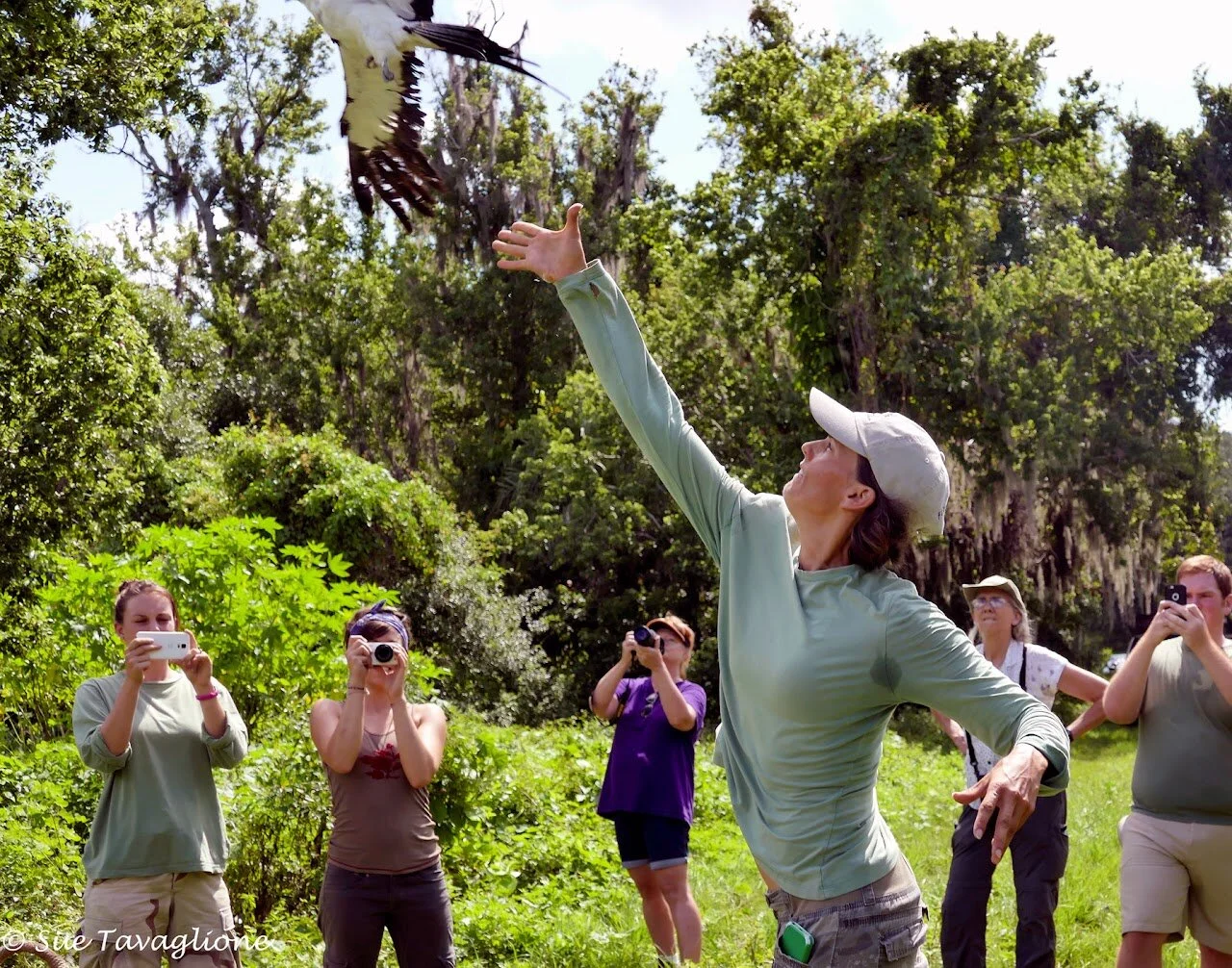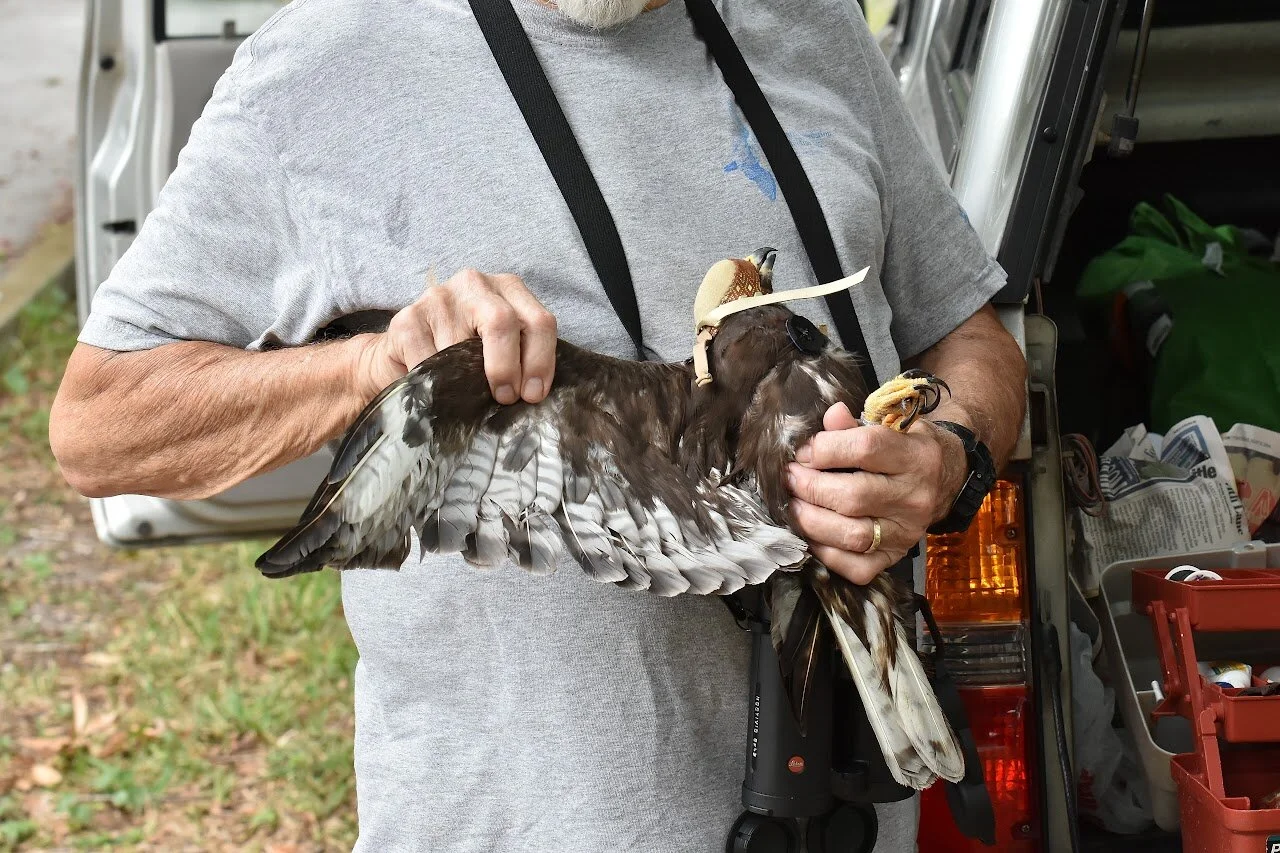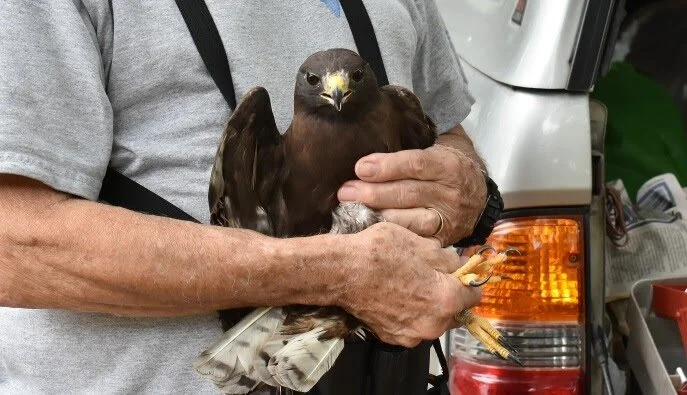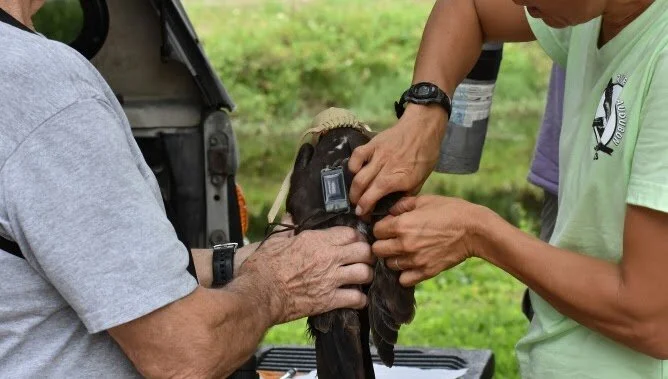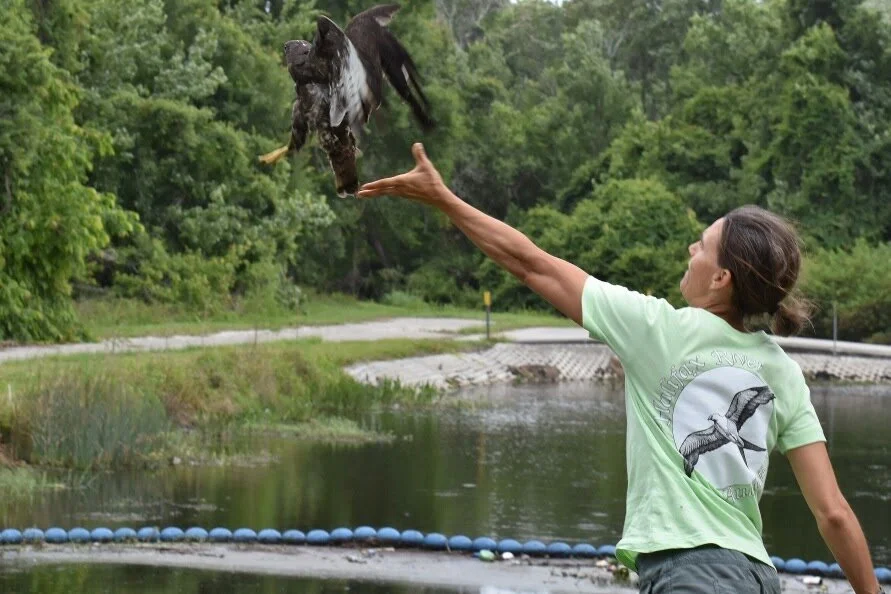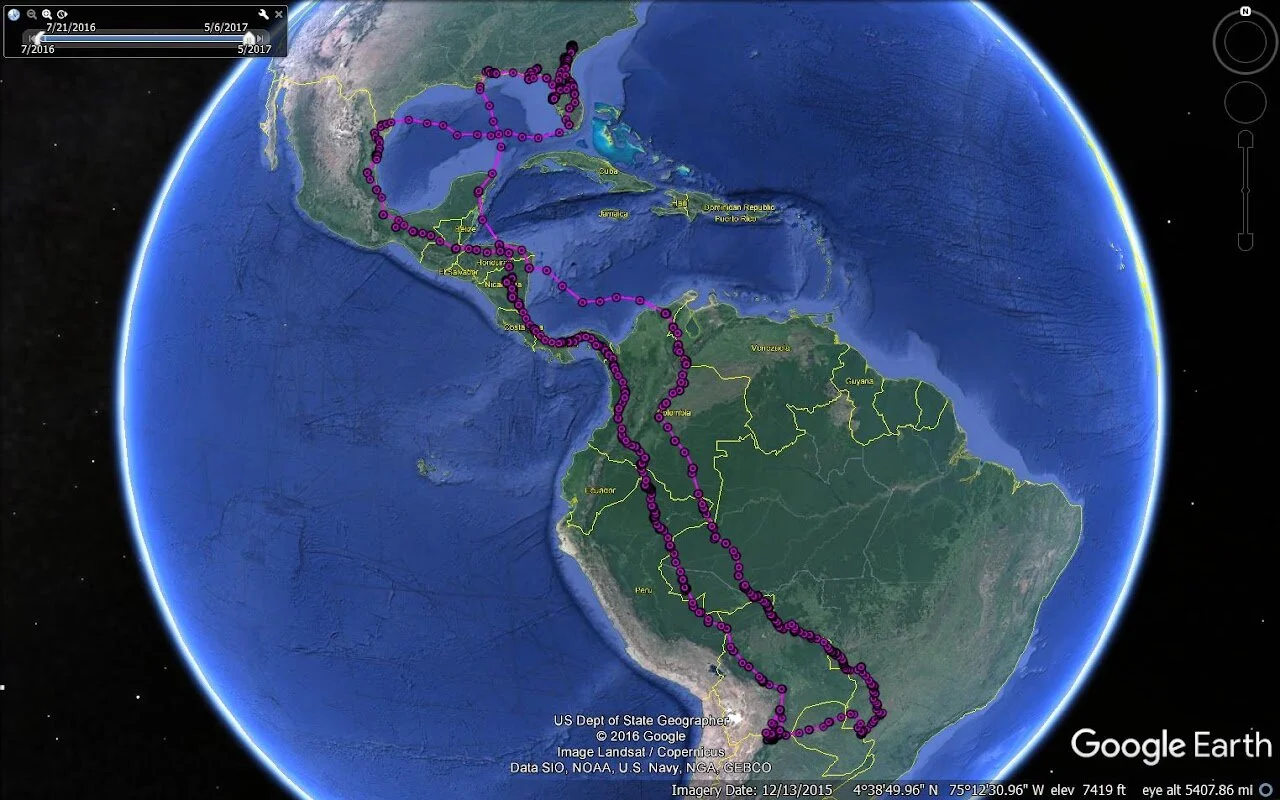This educational program was designed to educate our community on the movements of raptors. It is a joint effort between St. Petersburg Audubon Society, represented by board member Dr. Gabe Vargo, and the Avian Research and Conservation Institute (ARCI), headed by Executive Director, Dr. Ken Meyer - an avian migration and Swallow-tailed Kite migration expert.
What is Raptors on the Move?
The goals of the program:
Gain insight into the movements of native, migrating raptors.
We have sponsored two GSM transmitters (GPS receivers) which have been attached to a Swallow-tailed Kite and a Short-tailed Hawk. Kites migrate to South America whereas the Short-tailed Hawk, if it migrates at all, stays within the Southeastern U.S. Therefore we have an example of a long distance migrator and one that stays in the area. The transmitter on the Short tailed Hawk failed in December 2018 so we no longer receive data from that bird.
We have sponsored a satellite transmitter (PTT) that uses the Argos satellite for calculating position. This is attached to an Everglades Snail Kite. These birds have been moving north out of the Everglades area so our bird will be able to tell us what type of habitat they are looking for in this northward excursion and where their food supply is located.

Tagging Sawgrass and Dark Arrow
On June 12, 2016 two of ARCI’s staff, Gina Kent and Amanda Powell, and helper-bird, Trapper, the Great Horned Owl, set out to trap a Swallow-tailed Kite at Sawgrass Lake Park. They were unsuccessful that first day, but on the 13th, a flock of Swallow-tailed Kites appeared. One was caught in the net as she dove after the owl.
After a series of basic measurements were made, the bird, a large female (confirmed by DNA analysis), was fitted with a GSM transmitter. The transmitter only weighs 16 grams (the bird was over 500 grams) and is solar powered. It sends a signal with its location date and time of day whenever it encounters a cell phone tower. It can also store over 10,000 data points if it is out of contact with a cellular network which are downloaded the next time a cell tower is encountered.
On May 23, 2017 Gina Kent (ARCI) trapped a Short-tailed Hawk at Sawgrass Lake Park, Pinellas County, FL. After banding, a GSM-cell phone transmitter was fitted to the Hawk and it was released at the site of capture. We have named the Short-tailed Hawk Dark Arrow after a small lake within Sawgrass Lake Park and the fact that the bird is a dark-morph and hit the mist net like an arrow!
Gina and Trapper | Photo: J. Clayton
Dr. Gabe Vargo and Sawgrass | Photo: J. Clayton
Sawgrass's transmitter | Photo: S. Tavaglione
Sawgrass headed back to just east of Lake Seminole and continued to stay in the same area for over a week. She may have been using Sawgrass Lake as a training and feeding site for that year’s youngsters. | Photo: S. Tavaglione
Collecting data from Dark Arrow | Photo: J. Clayton
Dark Arrow | Photo: J. Clayton
DNA samples were taken to confirm the sex, but based on observation, Dark Arrow is most likely a male. | Photo: J. Clayton
Dark Arrow release | Photo: J. Clayton
Sawgrass' entire migration track from June 2016 through April, 2017. Before heading to South America she spent time in Georgia and North Carolina eating insects to build up energy supplies for the migration. She made it the long way across the Gulf of Mexico then followed the coastal areas of Central America down to an area in Bolivia where she spent several months. She started her northern migration in late January, early February and all went well until she got to southern Columbia where her transmitter started working intermittently.
2021-2022 maps
Sawgrass’s tracks over all time:
The single track that hugs the coast of Mexico was Sawgrass’s very first migratory trip after being tagged. The years following, it is evident that Sawgrass chose a similar route over the Gulf of Mexico. When birds take a path that requires traveling long distances over water, it generally means they are well fed and have the energy stores to safely complete the trip.



